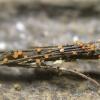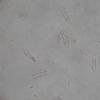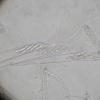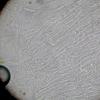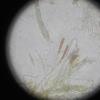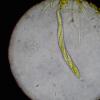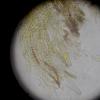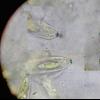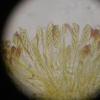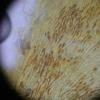
01-01-2026 18:35
Original loamy soil aside a artificial lake.The co

31-12-2025 19:27
Collected from loamy soil, at waterside (completel

30-12-2025 16:44
Pascal DucosBonjour,Une anamorphe rose stipitée, très nombre

30-12-2025 17:14
 Bernard CLESSE
Bernard CLESSE
Bonjour à toutes et tous,Pourriez-vous aider Albe

29-12-2025 10:15
Hulda Caroline HolteHello, I found and collected this propoloid ascom

30-12-2025 09:04
Hello.A Pyrenomycete sprouting sparsely but very d

29-12-2025 17:44
Isabelle CharissouBonjour,J'aimerais savoir si d'autres personnes au
Allophylaria subliciformis?
DirkW,
27-11-2020 11:34
 salut a tous,
salut a tous,on dead stem of indet. herbaceous plant we found in a poor meadow on calcarous ground these beautiful reddening helotiales. apothezia up to 1mm, with a conspicious darkening base, young apos are more or less dirty white.
spores quite variable in lenght and shape (19-26 x 4,5-7) with rounded ends, never pointed, vital with two bigger oil-drops ans some little ones, when overmature with a central septation. paraphyses filiform, a little swollen at the apex, sometimes with brownish drops at the tip, colouring red with lugol.
this all resembles much what is documentated in the zotto database under
https://drive.google.com/drive/folders/0B5SeyOEkxxZha002c3U5eklxOEU
but the problem is: the iodine-reaction in lugol is immediately blue and not red! who knows advice or has found this species too?
all best
dirk
Hans-Otto Baral,
27-11-2020 12:13

Re : Allophylaria subliciformis?
Hi Dirk
I can't say but I would not think Allophylaria. The shape of the apical ring should be shown in more detail (in dead state). Asci seem to have croziers.
The prismatic excipulum and the large spores excludes a Phaeohelotium.
Zotto
DirkW,
27-11-2020 13:57

Re : Allophylaria subliciformis?
hi zotto,
thank you very much! i will check iodine reaction and apical ring again. other microscopy has stunning similarity to collection i linked, in my view also the apos of the first two field-pictures. meanwhile i found a paper by ruben and you dealing with the species! there, a blue reaction is mentioned in weak iki-concentration, and a red one in strong concentration! so i will try again, drowning it in lugol and see if i can get a red one ;-)
best
dirk
thank you very much! i will check iodine reaction and apical ring again. other microscopy has stunning similarity to collection i linked, in my view also the apos of the first two field-pictures. meanwhile i found a paper by ruben and you dealing with the species! there, a blue reaction is mentioned in weak iki-concentration, and a red one in strong concentration! so i will try again, drowning it in lugol and see if i can get a red one ;-)
best
dirk
Hans-Otto Baral,
27-11-2020 15:01

Re : Allophylaria subliciformis?
Yes, you must apply strong-concentrated Lugool. This RB-type of reaction (blue at low) is universal even in lichens.
The spore width was a bit too low for my taste, could you please give also ascus measurements (restricted to living state)?
Thanks
DirkW,
27-11-2020 16:42

Re : Allophylaria subliciformis?
hi zotto,
the measuring of asci is 110-120 x 9-10. so unfortunately, much shorter than in the subliciformis-paper.
iodine-reaction seems to be "calycina-type". but stays blue! now i also saw in lugol coloring and VBs in the textura! same kind as in a. subliciformis.
perhaps a related species? maybe ... i will put it in the ?-folder ;-)
best
dirk
the measuring of asci is 110-120 x 9-10. so unfortunately, much shorter than in the subliciformis-paper.
iodine-reaction seems to be "calycina-type". but stays blue! now i also saw in lugol coloring and VBs in the textura! same kind as in a. subliciformis.
perhaps a related species? maybe ... i will put it in the ?-folder ;-)
best
dirk
Hans-Otto Baral,
27-11-2020 17:21

Re : Allophylaria subliciformis?
Yes, and much wider too, even from dead measurements!
But Allophylaria is correct. A. byssacea would better fit, but that is red at any concentration! I only know A. macrospora on woody substrates which reacts blue (BB), but that has multiguttulate spores.
DirkW,
27-11-2020 17:29

Re : Allophylaria subliciformis?
... yes, and strongly pointed, fusoid spores (macrospora). seems this is an undescribed one, as so often in inoperculate finds ... but my silent hope was, you have it in your big desk with the unpublished ones :-)



